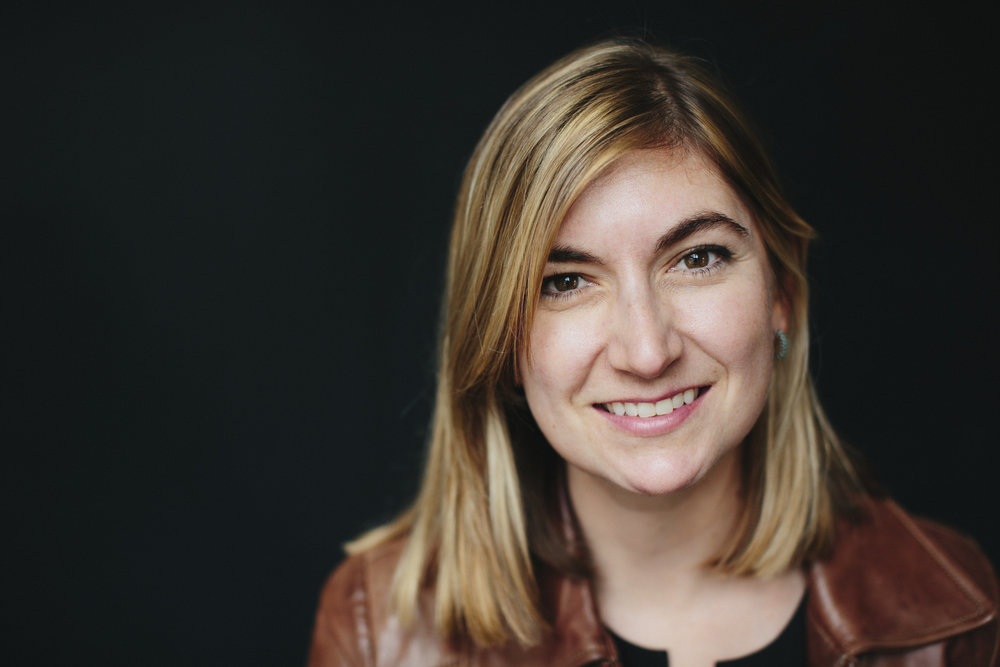 Kate Petersen lives in Flagstaff, Arizona. Her work has appeared in New England Review, Kenyon Review, Zyzzyva, Epoch, Paris Review Daily, LitHub, and elsewhere. A former recipient of a Wallace Stegner fellowship at Stanford and a Pushcart Prize, she currently serves as coordinator for the Center of Ecosystem Science and Society at Northern Arizona University.
Kate Petersen lives in Flagstaff, Arizona. Her work has appeared in New England Review, Kenyon Review, Zyzzyva, Epoch, Paris Review Daily, LitHub, and elsewhere. A former recipient of a Wallace Stegner fellowship at Stanford and a Pushcart Prize, she currently serves as coordinator for the Center of Ecosystem Science and Society at Northern Arizona University.
Her story, "Homework 3 (Spring 2016)," appeared in Issue Eighty-Four of The Collagist.
Here, she speaks with interviewer Dana Diehl about finding narrative in surprising places, how our writing changes over time, and landscape.
I love how the form frames the narrative in “Homework 3 (Spring 2016).” How did writing this as a homework assignment change the way you approached the story?
Samuel Beckett said of Joyce, “form is content, content is form.” And Walter Benjamin put it this way: “the veil and what is veiled [the wrap and what is wrapped], are the same.” There are a million great formulations of this argument, and though wary of drumming up undue grandeur or pretense via fancy quotation, perhaps I can lean lightly on the syllogism they propose: this wasn’t even a story until I understood it as a problem set.
I need to give credit to my terrific intro to fiction students at Stanford. The spring that I was writing this, they were doing p-sets every minute they weren’t writing and revising their stories—in electrical engineering, chemical engineering, computer engineering. I realized they were eating, breathing, sleeping this form I had never really lived myself (non-engineer that I was). So I asked them to bring some in, just so I could see what a p-set was. And what I discovered—what we discovered—were these totally rich, torqued narratives made of very specific, poetic lexicons that we could repurpose and bend to our own extracurricular aims.
As I familiarized myself with these strange language systems—in which naïve estimator or coupling parameter doesn’t mean naïve or coupling as I’d ever understood those words, systems in which one must follow a very logical but byzantine path toward a correct answer—I realized I’d found a sound receptacle for this overspill of feeling I wanted to write about. The inherent doubleness and constraints were welcome, and necessary.
The Collagist published “Homework 3 (Spring 2016)” in July 2016. Has your writing changed since then? If so, how?
Oh god. Well, I have a puppy, and I know she’s getting taller, but I can’t really see it because I’m with her every day. I think it might be the same with my writing: I hope it’s changed, by which I mean I hope it bears the mark of more time spent with the world, but I’m too close to know. One’s compulsions change over time and with them, perhaps, goes style. But I’ve also aged and been aged since 2016, by years and circumstance, and so I suspect my writing is a little closer to death. Though, if the poets are any indication, maybe that’s a net gain.
This story has a strong sense of place. Is the desert a familiar setting for you? Why was it important this story take place where it does?
Yes, I grew up in the Sonoran Desert and have deep affection for it. But here I was interested in the way that a stranger or beloved defamiliarizes a landscape. This desert is not a place the narrator knows, with this man beside her. Even so, the mutual recognition comes quick, so that by morning the mountains know her well enough to chide her, and she knows them well enough to reply.
What is something you are loving right now? It could be a book, a game, a TV show, a food, etc.
Loving poetry and journalism: Layli Long Soldier’s Whereas. Tommy Pico’s Nature Poem. Joanna Klink’s Circadian. Amy Gerstler’s Crown of Weeds. And High Country News. Please read and subscribe to their great work on climate change and the American West. Important, place-based journalism.
What are three words that describe one of your WIPs?
Twentieth-century science. I’m finishing a project on science during the cold war, though not the science of weaponry that’s been popularized in film and elsewhere. Even quieter science had a real claim to progress then, and though still political and politicized, it tracked with a public hope—hope that was sometimes misguided or mislaid, but was abundant. Founded.
We’re doing science in such a different paradigm now; I think there’s a good chance American science from these years will be marked only by its ability to pull us back from the brink of a warming climate, or not, and the unequal distribution of its benefits through a profit-based health care system.
